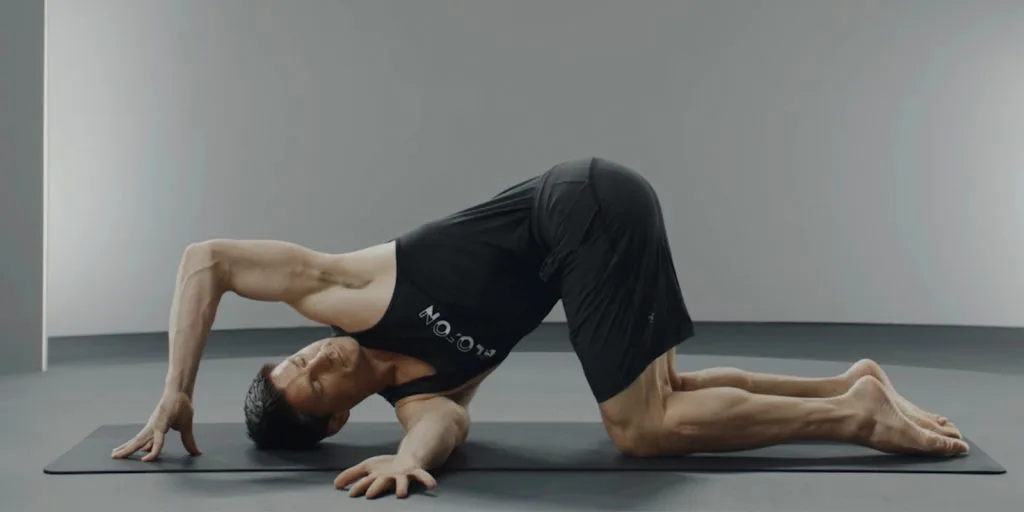


Whether you’re an athlete or someone who’s just trying to stay active and healthy, injury prevention is always a critical subject.
Mobility exercises that prevent injuries go beyond strength training or cardio workouts. It can be part of your lifestyle.
Improving your mobility can protect you from strains, sprains, and other common injuries, also enhancing your performance in any physical activity.
In this article on RambodFit, we’ll dive into the science behind mobility exercises that prevent injuries, why it’s so critical for injury prevention, and how you can start adding mobility exercises that prevent injuries into your daily routine.
By the end, you’ll have a clear understanding of how staying flexible and mobility exercises that prevent injuries are the keys to performing your best version.
Table of Contents

Let’s clear up a common misunderstanding, mobility and flexibility aren’t the same thing.
Flexibility refers to the ability of your muscles to stretch, while mobility is your ability to move a joint through its full range of motion with control.
It’s not just about how far you can reach; it’s about how well you can maintain strength, balance, and stability throughout the movement.
To put it simply mobility means:
flexibility + strength + control.
For example, you might be able to bend forward and touch your toes (flexibility), but can you squat down deeply while keeping your back straight and your hips stable? That’s what we call mobility.
Restricted mobility in a joint can cause muscle imbalances, poor movement mechanics, and increased stress on other areas of the body.
This is why poor mobility is a bold risk factor for injuries and the good news is, there are mobility exercises that prevent injuries.
When one part of the body isn’t functioning well, other parts have to fill the gap, which can lead to overuse injuries, strains, and even serious injuries like sprained ankles or torn ligaments.
Here are some reasons to show that mobility exercises that prevent injuries are important:
1. Improved Joint Health:
Mobility exercises help grease the joints and maintain the stability of the tissues around them.
This makes the joints more flexible and less prone to injury.
According to research published in PubMed, “increased joint range of motion can enhance overall joint health and decrease the risk of osteoarthritis and joint injuries Movement Patterns”:
When your joints move freely, your muscles can work as they’re supposed to. This improves your movement mechanics, helping you avoid awkward positions that can lead to injuries.
A 2017 study published in The Journal of Strength and Conditioning found that athletes with better hip and shoulder mobility had fewer injuries because their movement patterns were more efficient.
2. Strains:
Tight, immobile muscles are more likely to strain during physical activity.
For example, if your hamstrings are tight, they’re more likely to pull or tear when you sprint. A review in the Journal of Sports Medicine highlighted that athletes who regularly performed mobility exercises had fewer muscle strains compared to those who didn’t focus on mobility.
3. Increased Stability:
Mobility exercises that prevent injuries don’t just make you more flexible; they also strengthen the muscles that support your joints.
When your muscles are both strong and flexible, they’re better able to absorb impact and stabilize your body during movement, which lowers the risk of injury.
4. Quicker Recovery:
Exercises promote blood flow to the muscles and joints, which can help in recovery from workouts or physical activity.
When your body recovers faster, you’re less likely to experience overuse injuries.
According to a PubMed study, increased mobility directly correlates with faster recovery rates from high-intensity exercise.
Let’s take a deeper look at some of the research about mobility exercises that prevent injuries:
1. Mobility and Muscle Imbalance
Muscle imbalances, where one muscle group is stronger than its opposing group, are a significant cause of injury.
For example, if your quadriceps are stronger than your hamstrings, the imbalance can lead to knee pain or injury.
Mobility exercises help correct these imbalances by strengthening weaker muscles and improving the range of motion of tight, overused muscles.
A 2018 study published in the Journal of Human Kinetics showed that athletes who performed regular mobility work had more balanced muscle activation patterns, which significantly reduced their risk of lower limb injuries.
2. Joint Range of Motion
A study in The American Journal of Sports Medicine found that athletes with limited ankle mobility were more likely to suffer from ACL tears, a common injury in sports like soccer and basketball. The study concluded that restricted joint range of motion is one of the top predictors of injury.
Similarly, other research on shoulder mobility published shows that individuals with poor shoulder mobility are at a higher risk of rotator cuff injuries, especially in sports that involve overhead movements like volleyball or swimming.
3. Dynamic vs. Static Stretching
There’s been a challenge about whether dynamic or static stretching is better for injury prevention.
Research suggests that while both are beneficial, dynamic stretching which involves movement is more effective at improving mobility and reducing injury risk, especially before workouts.
A 2015 study from the European Journal of Applied Physiology found that athletes who included dynamic mobility exercises into their warm-up routines had a 50% lower risk of injury compared to those who only performed static stretches.
Now let’s take a look at some of the best mobility exercises that prevent injuries. These exercises focus on the areas that are more capable of injuries:
1. Hip Flexor Stretch with Glute Activation
The hips play a crucial role in many movements, from running to squatting. Tight hip flexors are common among people who sit for long periods, leading to imbalances and potential injuries.
– How to do it:
– Why it helps:
This stretch not only improves hip flexibility but also activates your glutes, which helps stabilize the pelvis and reduce the risk of lower back and knee injuries.
2. Thoracic Spine Rotation
Limited mobility in the thoracic spine (upper back) can lead to compensatory movements in other areas, such as the lower back or shoulders, increasing the risk of injury.
– How to do it:
– Why it helps:
Improving thoracic spine mobility reduces stress on the lower back and shoulders, promoting better movement patterns and lowering the risk of injury during overhead activities or rotational sports like tennis or golf.
3. Ankle Dorsiflexion Stretch
Ankle mobility is often overlooked, but it’s crucial for movements like running, jumping, and squatting. Limited dorsiflexion (the ability to flex your foot upwards) can cause compensation in the knees and hips, leading to injury.
– How to do it:
– Why it helps:
Improving ankle mobility enhances balance and stability in activities like running or lifting, reducing the likelihood of ankle sprains or knee injuries caused by poor movement mechanics.
4. World’s Greatest Stretch
This full-body stretch is perfect for targeting multiple areas of tightness, including the hips, hamstrings, thoracic spine, and shoulders. It’s a dynamic movement that helps improve mobility and flexibility while promoting better body alignment.
– How to do it:
– Why it helps:
This stretch opens up the hips, shoulders, and spine while engaging the core, improving overall mobility and reducing the risk of injury in a wide range of physical activities.
5. Cat-Cow Stretch
This classic yoga stretch helps improve spinal mobility by promoting controlled movement through the entire spine, from the neck to the lower back.
– How to do it:
– Why it helps:
The Cat-Cow stretch promotes healthy movement in the spine and can relieve tension in the neck and back, reducing the risk of strains and sprains in those areas.
6. 90/90 Hip Mobility Stretch
Hip mobility is essential for proper movement mechanics in the lower body. This stretch improves internal and external hip rotation, which is often limited in people who sit for long periods.
– How to do it:
– Why it helps:
By improving hip mobility, this stretch reduces the risk of hip, knee, and lower back injuries, especially in activities that require deep squatting or lateral movements.
7. Scapular Wall Slides
Poor shoulder mobility is a common problem, especially for those who spend a lot of time hunched over a desk. Scapular wall slides help improve shoulder mobility and posture by engaging the muscles around the scapula.
– How to do it:
– Why it helps:
These mobility exercises that prevent injuries also improve shoulder mobility, strengthen the upper back muscles, and promote better posture, reducing the risk of shoulder impingements or rotator cuff injuries.
So if you are just obsessed with training and not paying any attention to your health and function, I think after reading this article you know that mobility exercises that prevent injuries are quite essential in every individual life.
You must make it part of your routine and with consistency, I’m sure that you will feel the result when you see that mobility exercises that prevent injuries really work!!
For more corrective exercise articles you can check:
Mobility exercises that prevent injuries improve your mobility pattern, reduce muscle strain, and strengthen the muscles around your joints.
Good mobility exercises that prevent injuries, keep your joints healthy and your muscles balanced.
Equipment like foam roller or resistance bands can be useful sometimes but generally, you can perform these exercises without equipment.